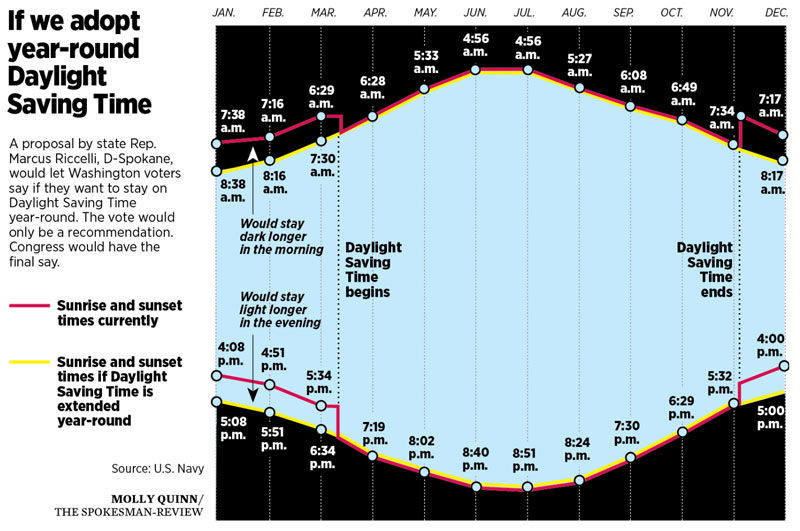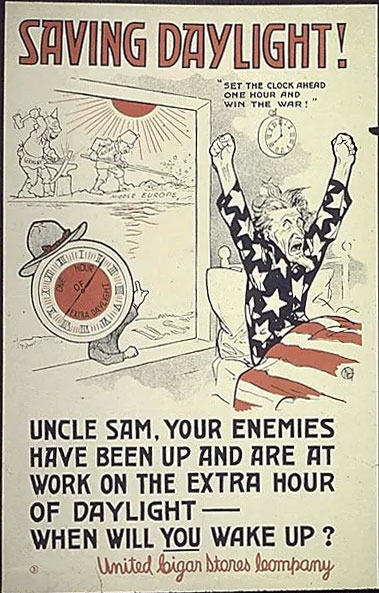Pass the Sunlight Protection Act!
03.09.2019
There's been a lot of buzz lately about daylight saving time (DST). Oh yes, btw, it's 'saving' not 'savings', no matter how good that s feels. Perhaps you've been catching up on your sleep, prepping for our annual spring forward, and missed it but there's a real effort afoot for stopping the madness.
Last year both California and Florida voted essentially to end what most of us would call Standard Time and stick with DST permanently. California passed Proposition 7 (legislatively referred), while Florida's House/Senate passed bills with heavy majorities (33-2, 103-11). Both efforts are symbolic unless the states can get the Congress in Washington, D.C. to agree. The only current legal option for states to opt-out of time changing is to adopt Standard Time permanently, like Arizona and Hawaii.Two national Florida leaders have presented legislation to change that and take the entire nation to permanent daylight savings time [Note: AZ, HI would be able to choose]. This past Wednesday, March 6th, 2019, Senator Marco Rubio posted the Sunshine Protection Act and Congressman Vern Buchanan released this coordinated press release, announcing their House/Senate effort.
What about other States?
Other states are taking notice. Just today in Washington State, the House passed HB 1196 sponsored by Marcus Riccelli and includes a public vote on the subject.
Jim Camden's article in the Spokesman Review also included this helpful chart. As of February 22, Idaho's House of Representatives voted down their bill but Oregon has sponsored legislation similar to Florida. SB 320 by Senator Kim Thatcher and Representatives Bill Post and John Lively proposes to keep Oregon on daylight saving time.We’re on Daylight Saving Time eight months of the year already,Riccelli said. California, Oregon and Idaho all have movements to stay on Daylight Saving Time year-round, he added.
Some states want to join Arizona and Hawaii. Oklahoma with HB 1117 and Kansas with HB 2008 both want out of DST entirely, joining permanent standard time. Texas has scheduled a public hearing for HB 49 for next week on the same issue. These states want out and know they can get out now without Congressional approval by picking Standard Time.
Other states have found an additional Congressional loophole regarding switching time-zones. It sure does seem like a lot of states want out of "the change" part of the equation. The fact Congress acts as overall gatekeeper on time policy may or may not influence those picking Standard over DST.
How Did We Get Here Anyway?
You will get a better idea from reading this great article from the Washington Post, The rise, set and rise of daylight saving time, but don't expect an "Aha!" moment. It's hard to find clear reasoning behind its continued use today. What I learned:
- Benjamin Franklin had nothing to do with this.
- "An extra hour of daylight" promised by DST doesn't create more time.
- Don't blame farmers, they didn't want this either. They work by the sun because animals and plants don't have watches.
- Germany adopted a form of DST in 1916 in order to conserve coal during World War I.
- The United States followed suit in 1917, but then promptly repealed it in 1919. In fact the country hated it so much, the repeal legislation was vetoed by President Wilson (who liked it, apparently), and his veto was prompty overriden by the Congress.
- Other than briefly during WWII, DST didn't become official again until 1966.
Is it even beneficial?
In truth, there are still some situations where the time change can help save energy, although it depends a lot of the town and its proximity away from the equator. Most studies I see speak of the negative effects of shifting our body clocks (circadian rhythm), even by that one hour. Others note a consistent decrease in productivity after the spring forward. Some studies noted up ticks in seasonal affective disorder (SAD). An Australian study noted an increase in suicides. Others cover miscarriages and a Swedish one on heart attacks.
For me it's about the body clock, mine is cranky and hates learning new things. I also enjoy the incremental progression of each day as the calendar drags me around the sun. Just let noon be noon, no matter what month it is. I'd be just fine joining Arizona & Hawaii on Standard Time but the drive appears to be for permanent DST. As long we can stick with one, I'm in.


